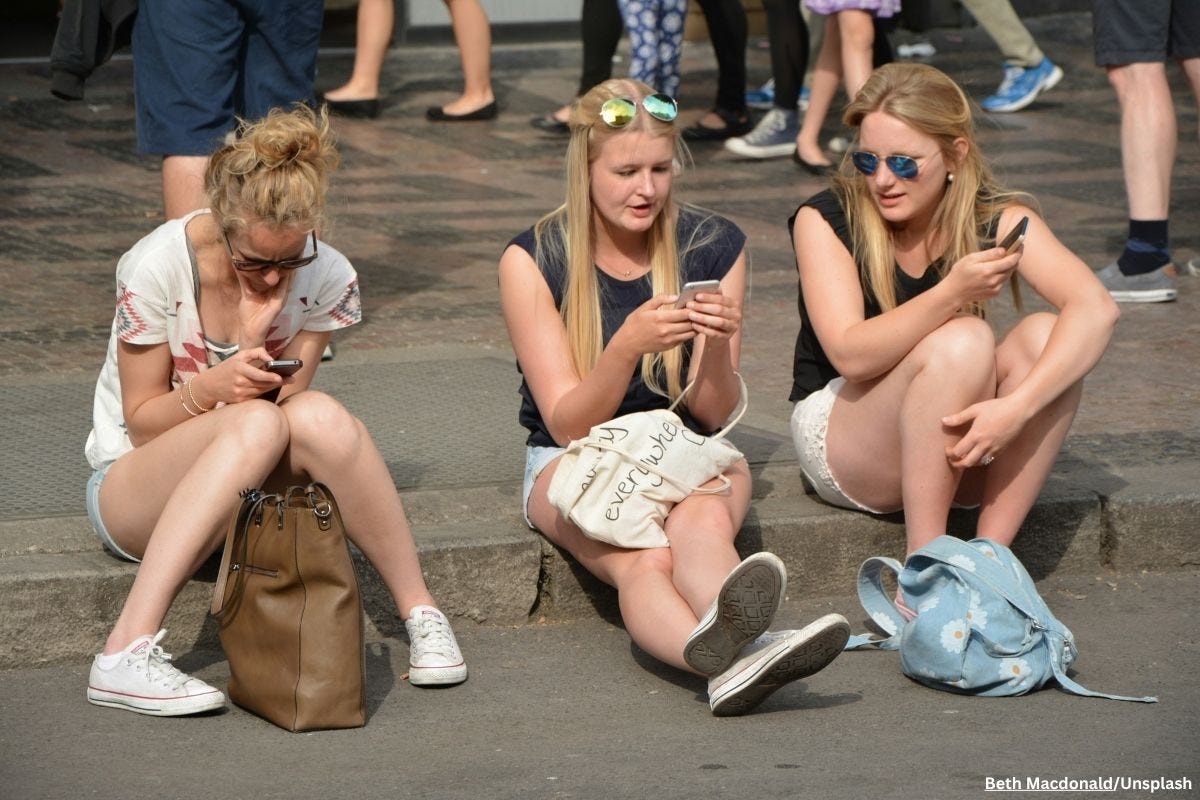The Social Role of Alcohol Is Changing. Now What?
How digital life is rewriting the rules of drinking and socialising
Why are young people drinking less — and what does it mean for the future of alcohol?
One of the strongest and least understood forces behind the decline is digital technology. But not for the reasons people assume. This isn’t just about kids avoiding embarrassing photos. It’s about something deeper: how online life is reshaping social behaviour, risk perception, and even the function of alcohol itself.
The impact of digital technology
The authors of Young People, Alcohol, and Risk: A Culture of Caution, on which this post is based, identified digital tech as one of the most significant drivers of moderation — but not for the reasons everybody thinks.
The self-imposed panopticon
Are teenagers avoiding drugs and alcohol because they’re worried about being captured on social media? After all, there are real risks to being caught getting drunk on camera. In theory, this should make a risk-averse generation even more cautious.
But it turns out that Gen Z is much savvier than that, and knows how to navigate potential social problems. They simply set up multiple social media accounts with different profiles and toggle between them as needed. Or use Snapchat.
They do worry about being judged, particularly young women, but the fear of being photographed or filmed in a compromising situation is not the main reason that Gen Z is drinking less.
What social media does do, is put them into a constant state of self-awareness, and it’s this self-monitoring that makes people think twice before consuming alcohol.
Young people are already moderating, because they’re worried about how their actions might affect their future success. The additional self-awareness is amplifying this defining generational trait.
It’s a subtle distinction, but an important one.
Alcohol marketing isn’t cutting through
The second assumption was that the sheer volume of online alcohol advertising Gen Z is exposed to would influence their choices. But the effect of advertising turned out to be hard to deconstruct. It might be less potent than assumed, because there’s so much competition for attention online.
When flirting goes digital, drinking declines
Social media is changing how relationships are formed and maintained.
Drinking has always been used for social bonding. In the past, if someone wanted to test the waters romantically, alcohol was useful because it lowered fear.
(I remember this from when I was a student in Australia. Drinking made people friendlier and easier to approach, and if it all went wrong, you could just deny that anything had happened. Nobody would remember the next day, anyway.
It was a very elegant system. I’ll just note that since we abandoned it, the birth rate has cratered.)
Now, teenagers can hang out online, which reduces the intensity of the interaction. Instead of risking humiliation by pursuing someone who might not be interested, they can fire off a casual emoji. Pretty soon, they’ve got a loose, low-pressure connection going. They don’t even have to go out to meet people — it can all happen on their phone, from the comfort of their bedroom.
One German study showed that each one hour increase in social media use led to a 40.2% decrease in the average number of drinks consumed.
Gaming, screens, and the new leisure economy
I should add that there’s plenty of evidence that many Gen Z are heavy gamers — and gamers tend to drink less. Asahi’s CEO recently told the Financial Times that Japan’s falling alcohol consumption isn’t about health, but the rise of digital entertainment. The company is now targeting people who stay home to game instead of going out to socialise.
This suggests the real issue isn’t flavour or packaging — it’s that alcohol is losing its social function.
I should reiterate that these changes are being seen in Anglophone/Protestant countries, and not in Southern or Eastern European ones. Maybe the answer isn’t a new RTD format, but a mass conversion to Catholicism. (After all, wine is part of the ritual. Plus, the new American Pope is fluent in English.)
Social cachet has moved on — and so has drinking
Many drinking norms are still in place. Young men still tend to drink beer and young women drink other things; wine and cider were mentioned in Australia, and probably plenty of cocktails and RTDs as well.
Young men also drink more heavily than young women, though the gap is narrowing. But it’s not closing because young women are catching up to their male peers — it’s because young men are drinking less.
Young women also see drinking in public places as risky. They also reported more pressure to uphold their social reputations, especially under the gaze of social media.
But what’s truly striking is that young men no longer gain social cachet from drinking. Sports and gaming are cooler.
There is a class element to this. Young people from more affluent backgrounds are earlier adopters of moderation and abstention, making moderation a marker of upward mobility. Their parents are present and involved, driving their kids to parties and talking to them about alcohol.
What happens when Gen Z starts drinking?
Over the course of the research, the teenagers being studied grew up and into their early 20s. Once they were out of school and into the next phase of their life, one of three things happened:



